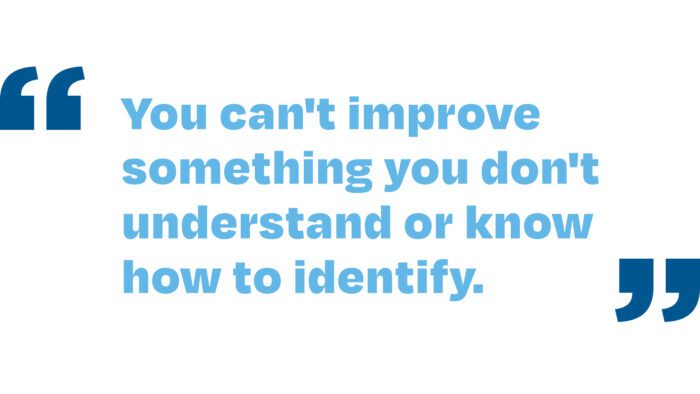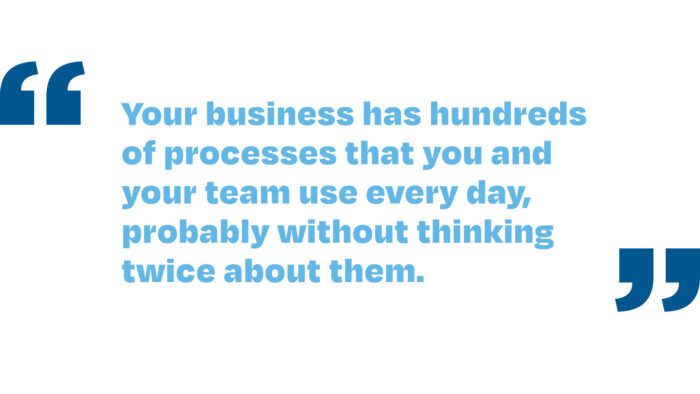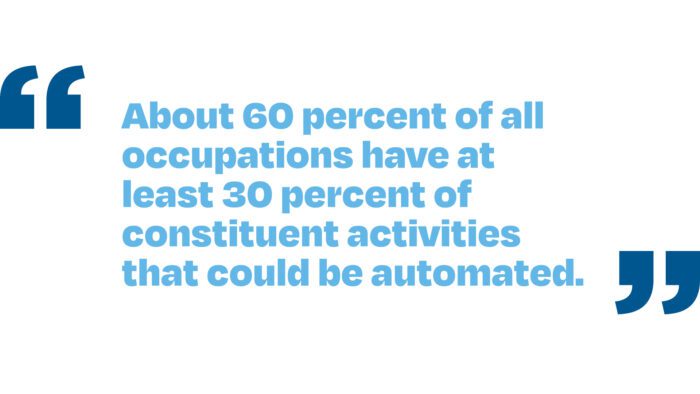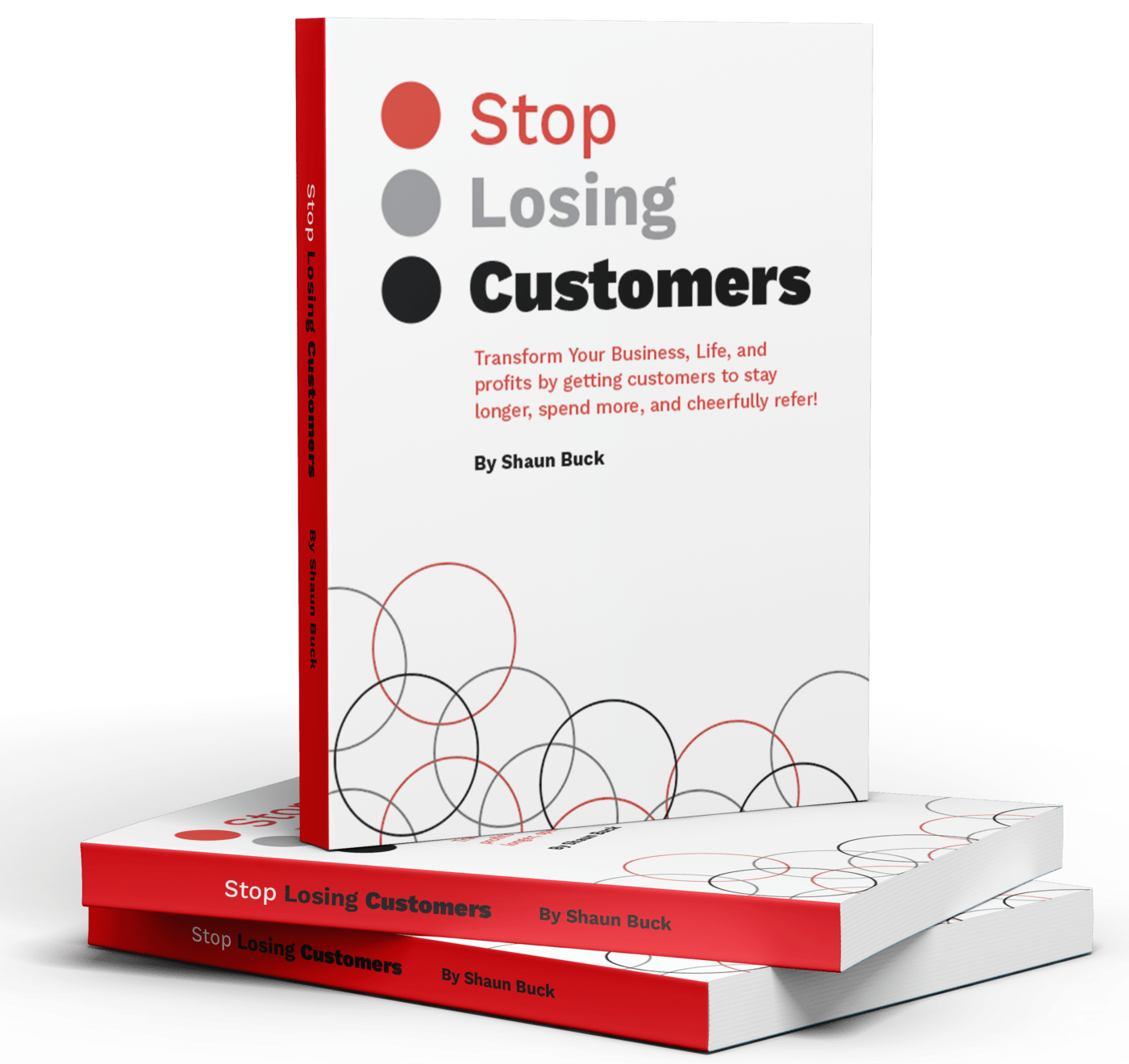Regardless of how many trendy marketing initiatives you start or staff parties you throw at the mini golf course, your business needs to run smoothly in order for it to be successful — and lucrative. At its root, a company is simply a series of steps that, when followed, achieve a desired goal. These steps are called your business process, and if your business process is a mess, your bottom line will be too. Sometimes, business owners don’t even realize how far their business processes have fallen from grace or how to improve business process efficiency when it has broken down.

Worse, some business owners aren’t even sure how to evaluate their efficiency or identify where the processes are failing. And, it’s not always their fault either, especially when running a business is a relatively new endeavor. But regardless of someone’s business savvy, identifying, tracking, and improving business processes is vital to success — much so that most business owners recognize this and prioritize it in their strategic plans. According to a survey from BPTrends, 93% of organizations in the survey were engaged in multiple process improvement projects. So, if you’re not constantly asking how to improve business process efficiency at your company, you need to start. Like, now.
However, if this is something you’re not doing already, it may be confusing when trying to start, especially when you don’t know what to look for. Luckily, we know our way around business process efficiency and how to improve it, so allow us to break it down for you.
What Is Business Process Efficiency?
You can’t improve something you don’t understand or know how to identify. Business process efficiency is essentially the amount of effort (or input) required to produce something. That something can be internal, like training new employees, or external, like producing a product or offering a service.

Here’s an example: If your business makes cushioned shoe inserts and it takes 150 employees, 2 weeks, and $1,000 to make 1 insert (not even the pair!), your business process efficiency is awful. This efficiency level is so bad that we’d probably suggest this business owner look into other ventures, in all honesty.
Conversely, if, in 2 weeks, 150 members of your team can make 75,000 pairs of inserts for less than $1,000, your process efficiency is probably pretty good.
Obviously, our examples are exaggerated, but they make our point quite nicely. If you’re putting way more time, energy, effort, and money into something than you’re getting out of it, your processes aren’t efficient, and you need to improve them.
But, in a nonextreme example, how can you identify when a process fails? The answer? You measure them!
How To Measure Business Process Efficiency
To really figure out how to improve business process efficiency, you need to identify how and where your processes fail. The thing is that your business has hundreds of processes that you and your team use every day, probably without thinking twice about them.

There’s a very straightforward formula businesses use to get a birds-eye view of whether or not the processes they have in place actually yield results for their bottom line.
Math It Out
That formula is: (monetary value of outputs/monetary value of inputs) x 100
Let’s go back to the shoe insert example. If you pay $5,000 a day for the labor and materials to make a shoe insert, but your company produces $12,000 worth of shoe inserts daily, your business would be operating at 240% efficiency. For reference, any process percentage over 100 is considered to add value, which means it works.
Now, let’s say you invest $3,000 in 6 months for new employee training, but those new employees are still slow to pick up on their duties by the end of the 6 months. This prolonged period of confusion results in these new employees slowing down routine procedures to ask questions, fix mistakes, or simply sit in bewilderment for hours. At the end of the 6 months, the new employees only manufacture $600 worth of inserts. The efficiency percentage here is 20%. Obviously, something in your training process has broken down and must be improved immediately.
This is a very general measure and certainly not the end-all be-all of whether or not you should investigate your processes. In fact, it’s good practice to perform routine audits even when they seem to be working just fine. But, if you’ve never done it before, it’s a good place to start, and you can use the idea for many processes.
Ask Your People
Another way to know your processes need improvement is by asking the only people who come into contact with your business as much as you: your customers and your employees.

Send out a survey to customers after they patronize your business and ask for their feedback on the service. Have they had issues with an order lately? When they received your service, are there any improvements they recommend you make? How was the customer service?
You can also take the same approach with your employees since they’re more often the “boots on the ground” of your operation. Is there any task they do that can be streamlined? Do they find themselves going back and fixing the same mistakes? What are they?
Sometimes, seeing how to improve business process efficiency from the inside looking in is like trying to draw someone’s portrait in a pitch-black room. It’s harder to distinguish differences when you’re completely immersed in it.
How To Improve Business Process Efficiency
Once you understand what business process efficiency is and how to identify when it trends downward, it’s time to do something about it. But where do you start?
Identify Where Efficiency Breaks Down.
By using any of the methods we discussed above, such as using an efficiency percentage or asking your people, you’ll quickly start to notice the processes in your business that work great and those that don’t. If all of your customers complain about how difficult it is to contact your customer service team, that’s a major red flag. Or, if most of your employees point out one specific step in the production process that needs adjusting, you should listen to them. Likewise, if you look at process structures as a whole, such as manufacturing, and you seem to be losing money rather than making it, it’s time to take a closer look.
Identify Your Goals For Your Processes.
So, you know that your customer service, manufacturing, training, or whatever process stinks. What now? According to Erin Greilick, a senior consultant at CMA Global, it’s to make clear exactly how you want the process to change so “there is clarity around what the outcome is and the motivation behind the effort that you’re about to undergo.”

We’ll follow the customer service example. If your customers are complaining that it’s hard to get in touch with your team, how do you want the process to improve? Obviously, you shouldn’t set a goal to have your team work on building relationships on the phone with customers for this specific issue. Instead, a goal like “reduce the call wait time to 10 minutes maximum” or “ensure every customer gets a call back the same day” is better. These are relevant goals that directly address where your process breaks down.
What would a resolution look like if you realize you’re not creating enough products to match your input costs? Does efficiency need to increase by 5%? 20%?
What would the best result for these processes be in a reasonably realistic world?
Once you know those answers, you have a goal to aim for. The next step is getting there.
Create A Road Map
Your process inefficiencies won’t solve themselves, and it’s up to you and your team to drive your business from where you are now to where you want to be.
Greilick says to start by asking yourself, “How would [this process] need to change in order for us to be quicker, more effective, more productive?”
Maybe your customer service issue would be resolved by hiring another agent, or maybe current agents need new software that instantly pulls order data for the customer on the phone.
If you can’t answer that question yourself, ask your team! Organize collaborative brainstorming groups surrounding the issue with the people who know the process best. We also recommend involving people outside of that department to lend their ideas, too, since sometimes employees in different departments have a more objective view while still understanding the product or service.
Consider Automation
One of the fastest ways to make improvements is to automate some of the processes that are breaking down. And according to a McKinsey report, your business may be overdue for some automation. In fact, “About 60% of all occupations have at least 30% of constituent activities that could be automated.” Yours is no exception.
Pretend your HR department spends hours manually inputting employee benefits information into your records. Instead of wasting their, and your, time by having them sit at a desk and simply enter information, you can invest in HR software that enables your team to put their data in directly themselves. That way, your HR team can spend less than half the time reviewing the information and move on to fry bigger fish.

Take some time to do some research regarding your processes. Is there a software or machine that can solve the issue slowing you down? Sure, it’s an upfront investment, but the returns on your exponential rise in process efficiency pays for the automation itself.
Some people don’t like the idea of turning their day-one processes over to a machine because “that’s how they’ve always done it.” But if “how you’ve always done it” results in profit loss and inefficiency, avoiding automation simply because of the “good old days” is costing your bottom line.
Start New Processes and Monitor Them Closely
Hopefully, by this point, you’ve identified where your business processes can be improved, developed a plan on how to improve business process efficiency, and researched any potential opportunities for automation. Now, it’s time to officially make the changes you’ve outlined.
First, it’s important to start slowly. Any change you make to a process you’ve had for a long time will be jarring for your staff, customers, business partners, and business overall. Changing every inefficient process at once is probably not a good idea. Instead, start with the one that is the least efficient or delivers the most damage to your business.
Inform your team of the changes before they happen, and clearly outline the new process going forward, preferably in writing for everyone to refer back to. It sounds silly, but any new change is easy to forget when someone has been doing something the same way for months to years.
Once you’ve slowly started the new processes, you may be tempted to think, “Problem solved! Thank god that’s over.” But according to Greilick, your job isn’t over; she states, “Once you institute that process, let people know, ‘Hey, I need feedback.'”

In all honesty, the new process you implement may fare worse than the original, but it would take longer for you to find that out if no one ever told you. No process that you begin is permanent, and everything can be reversed, changed, adapted, or completely undone. So a few weeks or months after implementing a new process, ask your staff or customers what they think about the change. Is it better or worse than the original? How has it helped? Is there anything else to improve?
Part of being a great business leader is taking feedback and adjusting your business accordingly. Plus, employees and customers appreciate a company that strives to improve rather than stick to the old ways “just because.”
So, if you’re interested in more helpful insights like how to improve business process efficiency, we have the perfect tool for you. Our founder’s book, “The Ultimate Guide to Newsletters,” is full of expert tips, tricks, and strategies to boost your overall engagement levels and business performance. Contact us today to find out how you can get a copy!






